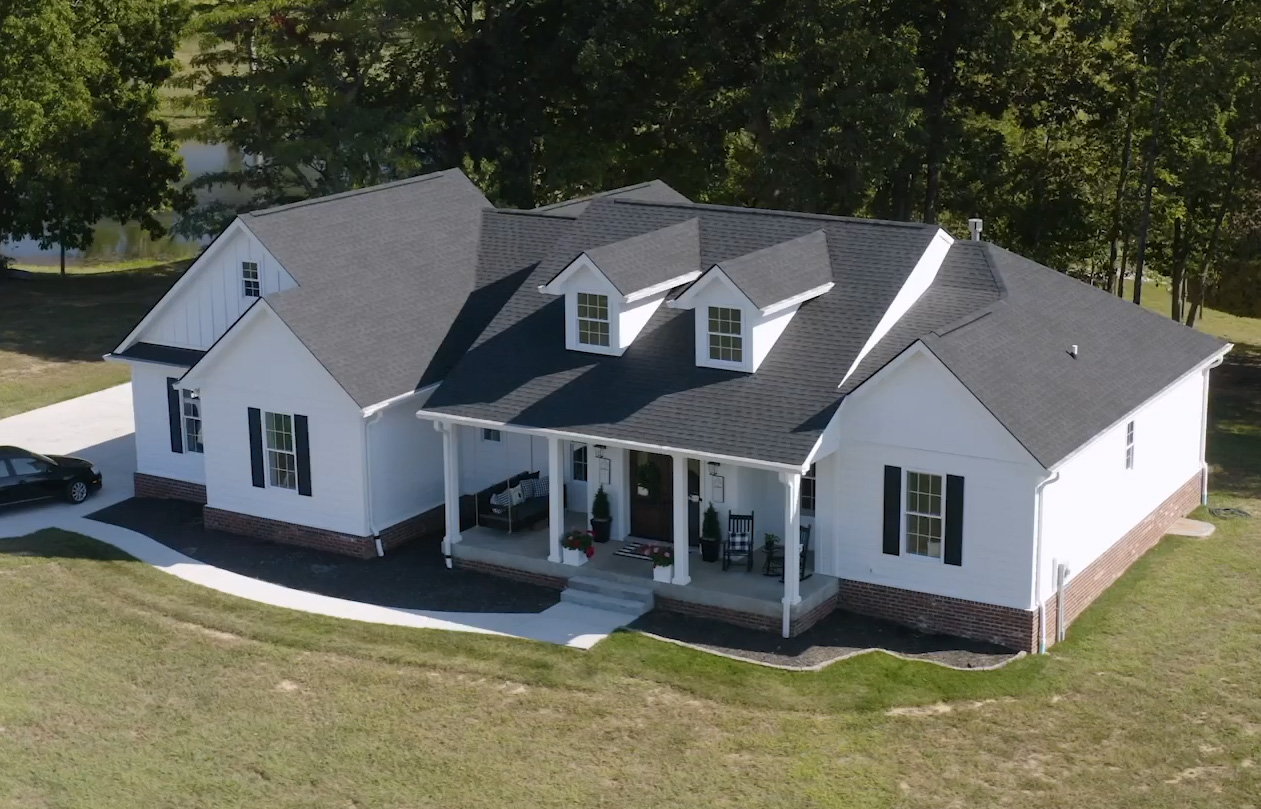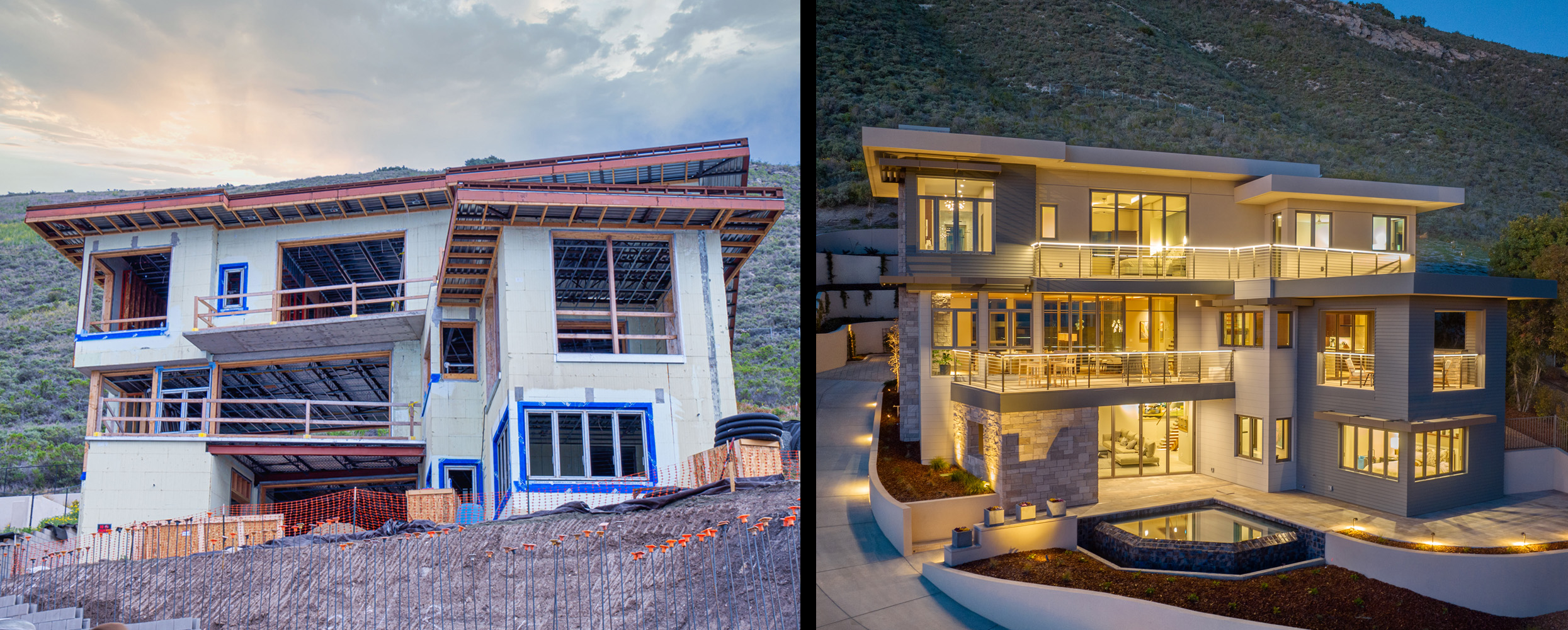
- Products
- Why Nudura
- Nudura Project Applications
- Training Academy
- Resources
- Company
If you’re planning on building the home of your dreams, it’s wise to select durable materials that will stand the test of time. You’ll also want to look for environmentally friendly options to help protect the planet, protect your family and save you money on heating and cooling bills as long as you live in the house.
Insulated concrete forms – or ICFs for short – are used during new construction to build stronger and more energy-efficient structures compared to wood-framing. Here's why ICFs are the perfect solution for building a sustainable and long-lasting home.
ICFs Are Energy Efficient
Buildings constructed with ICFs are some of the most energy efficient structures on the market. ICF walls and foundations are constructed using interlocking insulated blocks that are then filled with concrete. A standard six-inch-thick Nudura ICF wall assembly has an overall value of R-24, reinforced by the continuous insulation on the inside and outside of the home.
 With a wood-framed house, thermal bridging is a common occurrence that allows air to flow through the wall, reducing the effectiveness of the insulation and the structure’s heating and cooling systems. While the insulation between the wood studs helps prevent the heated or cooled air from escaping your home, the studs themselves do not. Since wood is a conductive material, in the winter, the warm indoor air travels through the wood to the outdoors. In the summer, the reverse occurs with warmer outside air migrating in.
With a wood-framed house, thermal bridging is a common occurrence that allows air to flow through the wall, reducing the effectiveness of the insulation and the structure’s heating and cooling systems. While the insulation between the wood studs helps prevent the heated or cooled air from escaping your home, the studs themselves do not. Since wood is a conductive material, in the winter, the warm indoor air travels through the wood to the outdoors. In the summer, the reverse occurs with warmer outside air migrating in.
With ICF walls, the two layers of continuous expanded polystyrene (EPS) foam insulation on either side of the concrete wall prevent thermal bridging, drafts, and cold spots. The concrete itself provides high thermal mass that regulates temperature swings. As a result, an ICF home can be up to 50 percent more efficient than a wood-framed house.
The airtight construction also means that heating and air conditioning equipment can be sized smaller, and it won’t have to kick in as often. This energy-efficiency saves you money on your utility bills and prolongs the life of your HVAC system.
ICFs Are Extremely Durable
ICF homes are far stronger than wood-framed homes, meaning they are less likely to be damaged or destroyed during a severe storm. They can withstand tornado- and hurricane-force winds up to 250 mph (402 kph). See why this homeowner chose to build with ICFs in their tornado-prone region of Kentucky:
In one test for wind-blown debris, 2x4 wood planks were fired at an ICF wall from a cannon: they simply bounced off and caused no structural damage. In other testing by the U.S. military, ICF walls deflected 50-caliber machine-gun bullets and the blast of 50 pounds of TNT from six-feet away with only superficial damage. As a result, the military uses ICFs for a variety of structures – from barracks to warehouses – to protect their personnel and materials. ICFs are also used to construct storm shelters, safe rooms, and tornado rooms to protect occupants during intense storms.
A Nudura ICF wall also has a fire-resistance rating of four hours, compared to 45 minutes of a wood-frame assembly, which increases the time you have to safely evacuate and the time firefighters have to extinguish the flames and save your house and belongings.
The EPS foam insulation of Nudura ICFs can also act as an air and vapor barrier, which prevents moisture – and air – from getting inside the walls. And, unlike lumber, the foam is not a food-source for insects like termites, and mold will not grow on it.
And Nudura ICFs are not only long-lasting, the framing blocks are manufactured with 100 percent recycled industrial plastic and, if an ICF building does need to be torn down some time down the road, all of the components are recyclable, giving them a second lease on life.
With all of these durability factors, an ICF home will last for generations with minor, if any, need for repair and structural maintenance.

CONTACT US
We’re committed to supporting homeowners and design professionals who are interested in or use our products. We’re always happy to help and provide more information.




